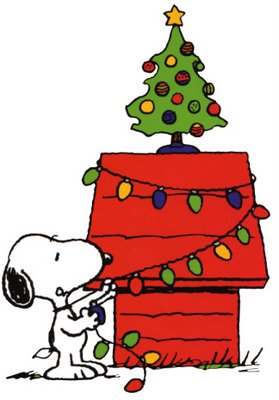Personally I choose Merry Christmas … but that’s because I was brought up in the Christian Church and that’s what it has always been for us. But in the spirit of TOLERANCE & RESPECT for others and their religious beliefs I don’t see anything wrong with the greeting “Happy Holidays” and I don’t think it’s an “Attack on Christmas” like some in the media like to make us think it is.
the greeting “Happy Holidays” and I don’t think it’s an “Attack on Christmas” like some in the media like to make us think it is.
“Happy Holidays” was actually conceived as a way for people of different faith’s to greet each other without possibly offending them with the wrong holiday greeting. After all the United States is a melting pot of different cultures. As CHRISTIANS, Jesus taught us to be tolerant and respectful of others and their beliefs.
Knowing how MANY religious holidays fall within the months of November, December and January I think it is much easier to have developed a “ALL-IN-ONE” greeting.
For those of you who may not be aware, here is the list of “Holidays” that are encompassed in the greeting:
Advent: four weeks prior to Christmas (Western Christianity).
Chalica: A holiday created in 2005, in the first full week in December, celebrated by some Unitarian Universalists.]
Saint Nicholas’ Day: 6 December
Bodhi Day: 8 December – Day of Enlightenment, celebrating the day that the historical Buddha (Shakyamuni or Siddhartha Gautama) experienced enlightenment (also known as Bodhi).
Our Lady of Guadalupe: 12 December – An important honor of Mexico’s Patron Saint before Christmas officially begins on December 16th[5]
Las Posadas: 16 December -24 December – procession to various family lodgings for celebration & prayer and to re-enact Mary & Joseph’s journey to Bethlehem [6]
Saint Lucia’s Day: 13 December – Church Feast Day. Saint Lucia comes as a young woman with lights and sweets.
Winter Solstice: 21 December-22 December – midwinter
Soyal: 21 December – Zuni and Hopi
Yalda: 21 December – The turning point, Winter Solstice. As the longest night of the year and the beginning of the lengthening of days, Shabe Yaldā or Shabe Chelle is an Iranian festival celebrating the victory of light and goodness over darkness and evil. Shabe yalda means ‘birthday eve.’ According to Persian mythology, Mithra was born at dawn on the 22nd of December to a virgin mother. He symbolizes light, truth, goodness, strength, and friendship. Herodotus reports that this was the most important holiday of the year for contemporary Persians. In modern times Persians celebrate Yalda by staying up late or all night, a practice known as Shab Chera meaning ‘night gazing’. Fruits and nuts are eaten, especially pomegranates and watermelons, whose red color invokes the crimson hues of dawn and symbolize Mithra.
Mōdraniht: or Mothers’ Night, the Saxon winter solstice festival.
Saturnalia: the Roman winter solstice festival
Pancha Ganapati: Five-day festival in honor of Lord Ganesha. December 21–25. Celebrated by Hindus in USA.
Festivus: 23 December
Yule: Pagan winter festival that was celebrated by the historical Germanic people from late December to early January.
Anastasia of Sirmium Feast Day: 25 December
Malkh: 25 December
Boxing Day: 26 December – Gift-giving day after Christmas.
Kwanzaa: 26 December – 1 January – Pan-African festival celebrated in North America
Saint Stephen’s Day: 26 December
Saint John the Evangelist’s Day: 27 December
Holy Innocents’ Day: 28 December
Saint Sylvester’s Day: 31 December
Watch Night: 31 December
New Year’s Eve: 31 December – Last day of the Gregorian year
Hogmanay: Night of 31 December – Before dawn of 1 January – Scottish New Year’s Eve celebration
Hanukkah: A Jewish festival celebrating the miracle of oil.
January
New Year’s Day: 1 January – First day of the Gregorian year
Solemnity of Mary, Mother of God: 1 January
Saint Basil’s Day: 1 January (Christian Orthodox) In Greece, traditionally he is the Father Christmas figure.
Twelfth Night: Epiphany Eve: 5 January
Epiphany: 6 January: the arrival of the Three Magi.
Armenian Apostolic Christmas: 6 January
